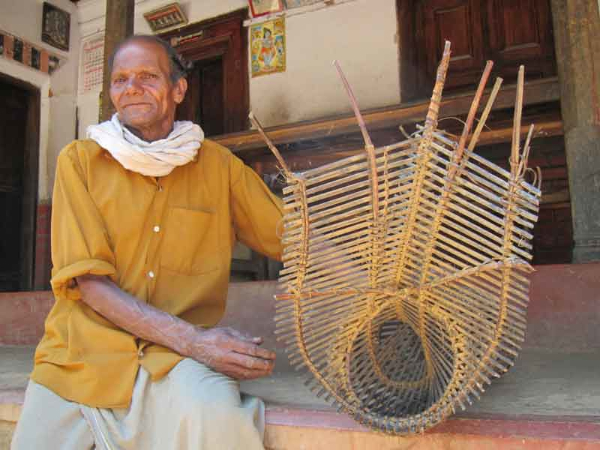Impacts of socio economic changes on tribes of Waynad in the colonial and post colonial period: A study with special reference to Kurichias by Rajan, E K | Read the full chapter here >>

Photo © Arun VC >>
CHAPTER – VI
ECONOMIC IMPACT OF COLONIAL AND POST-COLONIAL TRIBAL PEOPLE
In this chapter a detailed discussion on the economic policies of the colonial and post-colonial states are discussed. While discussing the colonial period emphasis is given to land revenue and forest policies and to assess its effect on the tribal life, especially among the Kurichias. In the post-colonial period, independent state‟s agrarian reforms, occupational mobility and land reforms were taken into analysis to understand the dynamics of the economic life of the tribals. […][T]he practice of tribal development or the modern principle of administration whether for colonial or other ends, were first brought to the tribals by the British.5 The colonial Government dealt with the tribals keeping their own vested interests in mind. Their approach was basically law and order oriented and primarily meant to keep the tribals isolated from the mainstream of national life. Their legal system was complicated and its language was alien to the tribals. It was thus the colonial period which brought most of the tribals under a common political organization. It might be the first deliberate attempt towards the tribals all over India.6 In pursuance of these laws the colonial rulers maintained a stern posture throughout their rule in India, and even in tribal areas they enforced them with an iron hand.7
Until colonial intervention and even a little later, the tribes continued to live with an „internally self-subsistent economy‟ and also self-contented traditional system. Since the advent of the British there began an infiltration by outsiders into tribal areas and the autonomous tribal economy was threatened. There emerged a relationship between tribals and non-tribals. But the process was reversed when the British policy of isolating the tribes resulted in large scale exploitation by landlords, money- lenders and contractors, adding to their already strained life in fighting off the onslaughts of ruthless nature. The judicial system which had been adopted gave the moneylenders immense power over their debtors. They had their heyday as no one was there to check their usurious activities. […]
Source: Impacts of socio economic changes on tribes of Waynad in the colonial and post colonial period A study with special reference to Kurichias, pp. 237-8
URL: https://shodhganga.inflibnet.ac.in/bitstream/10603/11187/15/15_chapter%206.pdf
Date visited: 19 January 2022
Brought up in a system in which all communications are by word of mouth, and hence used to trusting verbal statements, tribal populations get confused by constant reference to documents and written rules, which increasingly determine all aspects of rural life.
Tribes of India: The Struggle for Survival >>
Learn more about Indian researchers’ PhD theses: Descriptions and associated PDF files available for browsing and downloading (Shodhganga)
https://shodhganga.inflibnet.ac.in/handle/10603/11187
| Title: | Impacts of socio economic changes on tribes of Waynad in the colonial and post colonial period A study with special reference to Kurichias |
| Researcher: | Rajan, E K |
| Guide(s): | Vijayan, T M |
| Keywords: | History |
| Upload Date: | 13-Sep-2013 |
| University: | University of Calicut |
| Completed Date: | n.d. |
| Abstract: | newline |
| Pagination: |
|
| URI: | https://hdl.handle.net/10603/11187 |
| Appears in Departments: | Department of History |
See also
Adverse inclusion | Casteism | Rural poverty
Demographic Status of Scheduled Tribe Population of India (Census figures 2011)
Fact checking | Figures, census and other statistics
Human Rights Commission (posts) | www.nhrc.nic.in (Government of India)
Search tips | Names of tribal communities, regions and states of India
“What is the Forest Rights Act about?” – Campaign for Survival and Dignity
“Who are Scheduled Tribes?” – Government of India (National Commission for Scheduled Tribes, NCST)
Reports in the Indian press | List of periodicals included in this search >>
Search tips
Combine the name of any particular state, language or region with that of any tribal (Adivasi) community.
Add keywords of special interest (music, poetry, dance just as health, sacred grove and biodiversity); learn about the rights of Scheduled Tribes such as the “Forest Rights Act” (FRA); and the United Nations “Declaration on the Rights of Indigenous Peoples”, “Universal Declaration of Human Rights”, “women’s rights”, or “children’s right to education”.
Specify any other issue or news item you want to learn more about (biodiversity, bonded labour and human trafficking, climate change, ecology, economic development, ethnobotany, ethnomedicine, global warming, hunter-gatherers in a particular region or state, prevention of rural poverty, water access).
For official figures include “scheduled tribe ST” along with a union state or region: e.g. “Chhattisgarh ST community”, “Himalayan tribe”, “Scheduled tribe Tamil Nadu census”, “ST Kerala census”, “Particularly Vulnerable Tribal Group Jharkhand”, “PVTG Rajasthan”, “Adivasi ST Kerala”, “Adibasi ST West Bengal” etc.
In case the Google Custom Search window is not displayed here try the following: (1) toggle between “Reader” and regular viewing; (2) in your browser’s Security settings select “Enable JavaScript” | More tips >>
Note: hyperlinks and quotes are meant for fact-checking and information purposes only | Disclaimer >>
See also
Biodiversity and development – Kerala
Childhood – Kerala | Childrens rights: UNICEF India | Safe search
Childrens rights: English or Malayalam (UNICEF India)
eBook | Background guide for education
Education and literacy | Right to education
Kerala | State wise ST list (Scheduled Tribes)
Recommendations by the Expert Committee on Tribal Health
Tribal schools and educational projects – Kerala
Video | M.S. Swaminathan on Biodiversity and the sharing of resources
Video | Trailer to “Have you seen the arana?” – Kerala
Vulnerable tribal groups – Kerala
Women | Safe search | President Droupadi Murmu on women’s empowerment